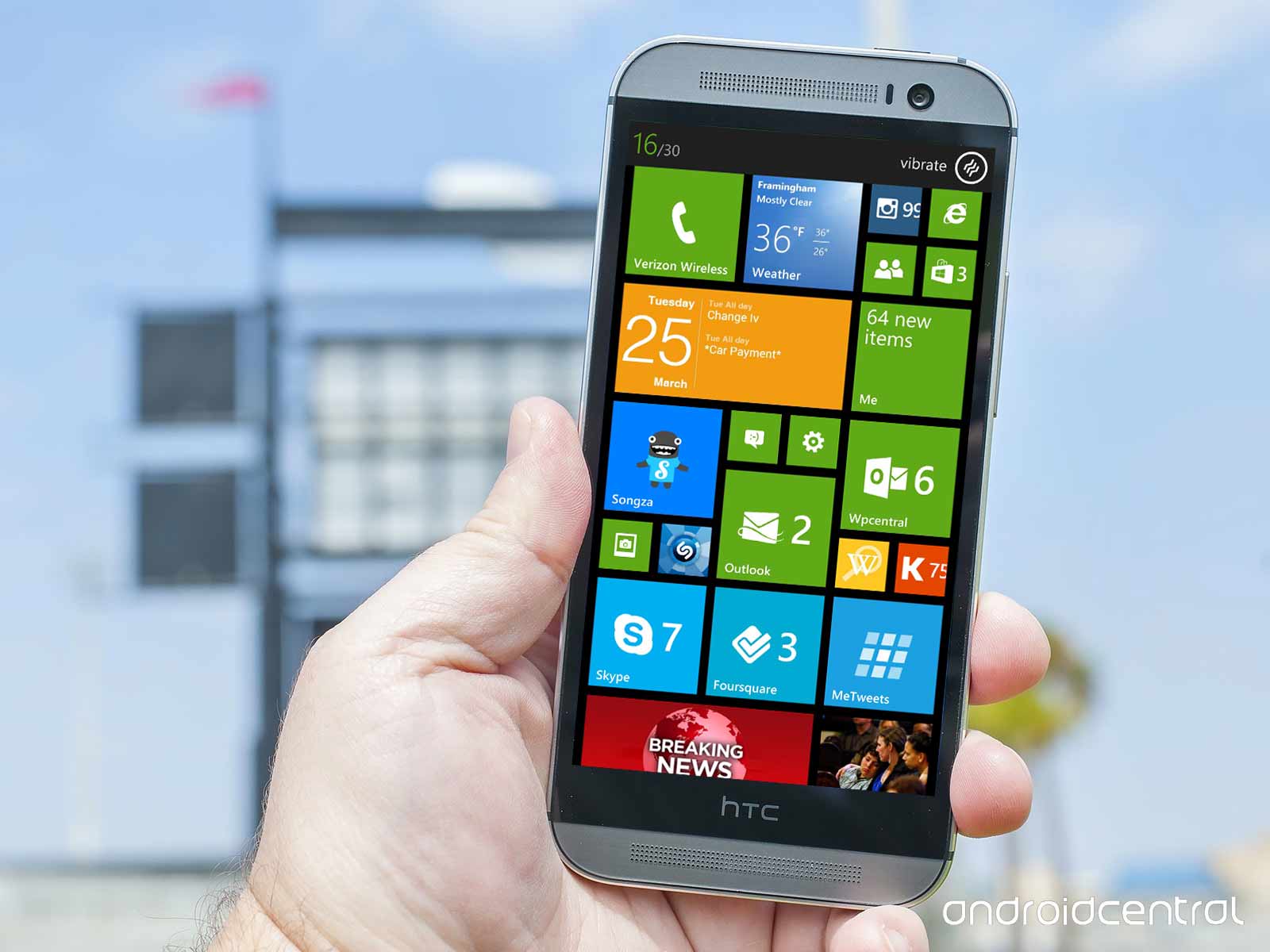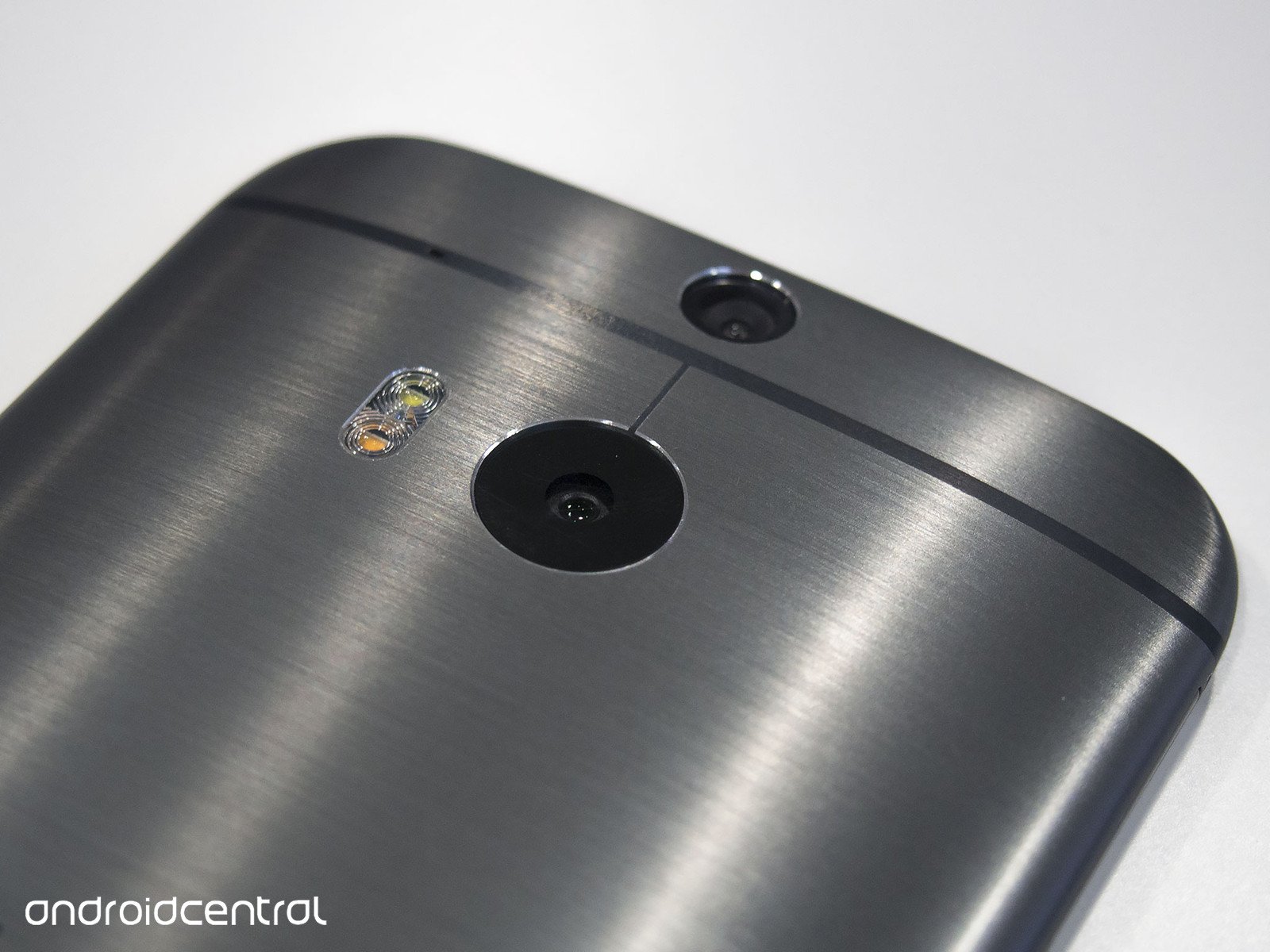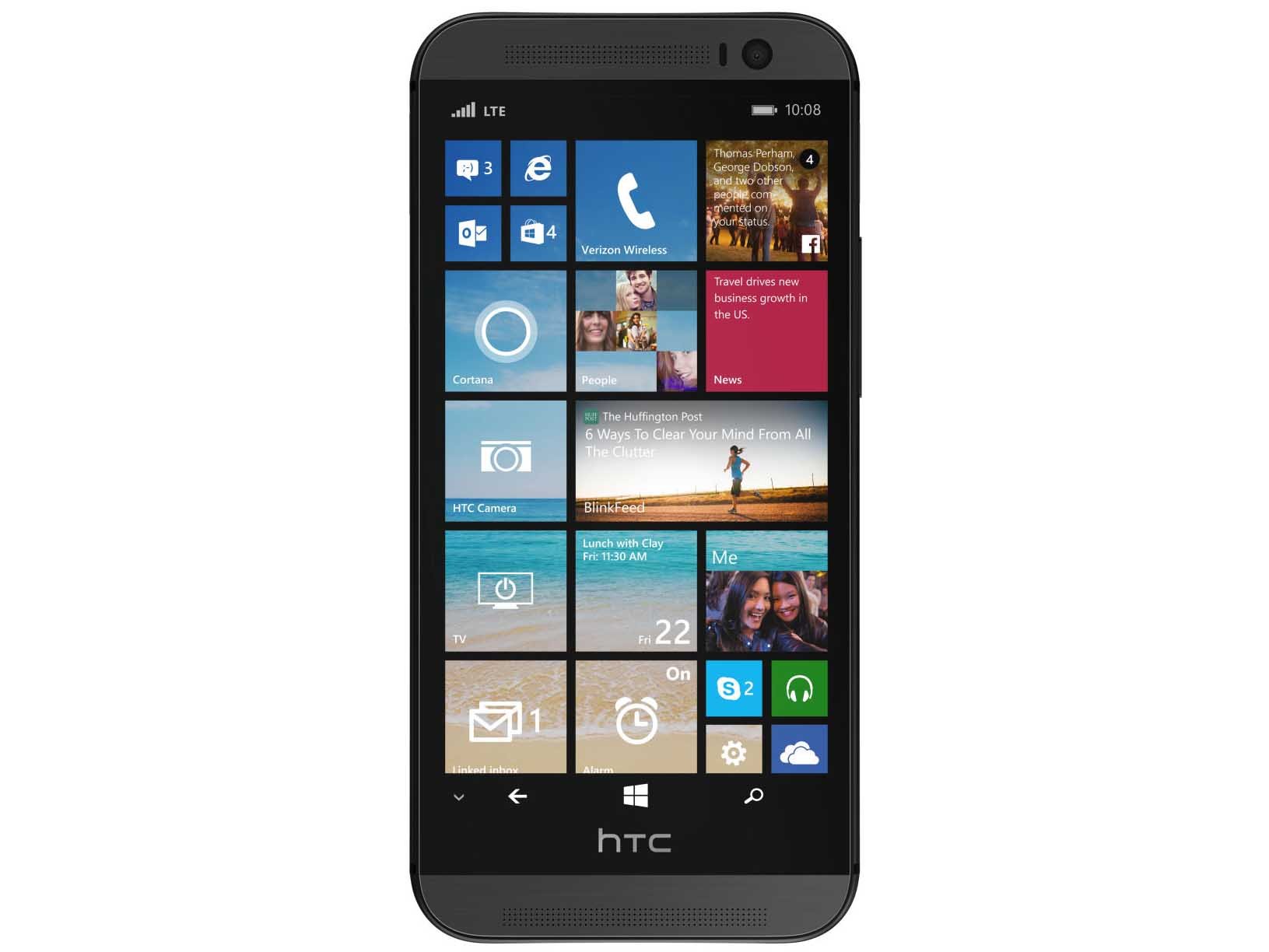HTC One for Windows gets Cortana integration with DOT VIEW case and specs confirmed

On August 19, HTC and Microsoft are holding a press event in New York City, presumably to announce the HTC One for Windows, a new high-end phone for Verizon wireless in the US. Earlier this month, an official render was found on Verizon's servers, confirming the phone's existence.
The HTC One (M8) for Windows (the 'W8' designation may be dropped) is thought to be the same phone for Android but with Windows Phone 8.1 Update 1 on board instead. However, questions remain about the One for Windows's specifications and if they would be the same as the Android version or altered.
Windows Phone Central has acquired exact details about the features of the HTC One for Windows phone, and in short, there are no surprises, which is great news.

HTC One (M8) for Windows
- Windows Phone 8.1
- 2.3 GHz quad-core, Qualcomm Snapdragon 801
- 32 GB internal storage; micro SD (up to 128 GB)
- 2 GB of RAM
- 5-inch Full HD, Super LCD3 display with Corning Gorilla Glass 3; 441 ppi
- 2600 mAh battery
- HTC UltraPixel camera; 5 MP front-facing camera
- Nano SIM
- HTC Boomsound
- U-Focus
- HTC Dot View case
Additional specifications of the Android version should also be similar, including:
- 36 x 70.6 x 9.35 mm
- Weight 160g
In porting over the designed-for-Android hardware, the HTC One (M8) for Windows looks to keep all the major selling points as it carries over to Windows Phone. Hardware parity is important if a customer is comparing the Android and Windows Phone version as any hardware differentiation could give the edge to one OS over another. Instead, consumers for the first time – at least on Verizon – can have a choice between one phone, and two differing operating systems with no stipulations.
HTC does bring a few marketing terms over to the Windows Phone version, including their 'U-Focus' ability, which is analogous to Nokia's Re-Focus app. U-Focus works in Auto mode though and truly lets the user refocus a photo after it is taken, rather than having to select the Nokia Re-Focus app and take a photo in a unique mode first. However, U-Focus only works in Auto mode, so even in on that phone there are some conditions.

'UltraPixel' references HTC usage of larger 2-micrometers pixels on the camera sensor, whereas the Nokia Lumia 920 only has 1.4-micrometer pixels. In theory, larger pixels can improve sensitivity for low-light images, although in practice HTC's One M8 produces moderate results. The downside with 'UltraPixels' is fewer pixels on the sensor (since they are larger). This tradeoff is why the One M8 "only" has a 4 MP camera instead of the 8, 12, 16 or 20 MP cameras, which are more common these days.
Get the Windows Central Newsletter
All the latest news, reviews, and guides for Windows and Xbox diehards.
'HTC Boomsound' is HTC's term for two high-powered, front-facing speakers with dedicated amplifiers. The speakers are on the front of the device – one near the top, the other at the bottom – and audio production is quite impressive.
Finally, the HTC Dot View Case lets users interact with their phone with the case closed, including unique Cortana integration:
"This case lets you see who's calling, then answer or decline the call without opening it. Just swipe to answer or simply put it to your ear. It also shows you the date, time, weather and reminders. You can also instantly access Cortana by simply swiping down."
That's pretty much in line with how the Dot View Case works on Android, as our pals at Android Central have showed.
The takeaway is that the HTC One (M8) for Windows should be a considerable phone when it comes to Verizon, possibly launching as early as August 21. HTC and even Samsung have created Android 'clone phones' in the past, but they always tend to have gimped hardware, creating a compromising situation for customers. Now that Microsoft has loosened the restrictions on hardware, HTC can easily port their top selling flagship Android device over to Windows Phone, and that is a big deal.
Windows Phone Central will be covering the HTC event live Tuesday, August 19 on location.
Further Reading
- Android Central's full review of the Android One M8.

Daniel Rubino is the Editor-in-chief of Windows Central. He is also the head reviewer, podcast co-host, and analyst. He has been covering Microsoft since 2007 when this site was called WMExperts (and later Windows Phone Central). His interests include Windows, laptops, next-gen computing, and wearable tech. He has reviewed laptops for over 10 years and is particularly fond of 2-in-1 convertibles, Arm64 processors, new form factors, and thin-and-light PCs. Before all this tech stuff, he worked on a Ph.D. in linguistics, performed polysomnographs in NYC, and was a motion-picture operator for 17 years.
